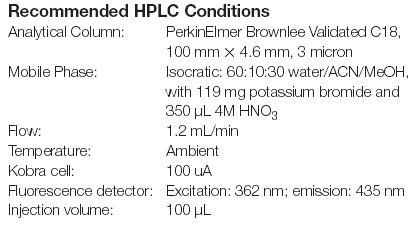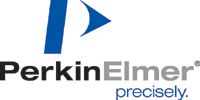Rapid Quantification of Aflatoxins in Corn by HPLC with Kobra Cell Derivatization and Fluorescence Detection
LCGC Asia Pacific
Very low level detection of mycotoxins in the agriculture products has become increasingly important. Mycotoxins are very resistant fungal metabolites that can remain in foods after processing and, sometimes, even after cooking. They are considered potent carcinogens and can be found in many varieties of foods. Of the mycotoxin class, aflatoxins are considered especially harmful, being both acutely and chronically toxic. Aflatoxin B1 and B2 are some of the most potent hepatocarcinogens known. Along with aflatoxins G1 and G2, even extremely low levels of these aflatoxins in the diet are important public-health concerns. With this in mind, this application note describes a specific, robust HPLC method for the low-ppb detection of aflatoxins B1, B2, G1 and G2 in corn.
Very low level detection of mycotoxins in the agriculture products has become increasingly important. Mycotoxins are very resistant fungal metabolites that can remain in foods after processing and, sometimes, even after cooking. They are considered potent carcinogens and can be found in many varieties of foods. Of the mycotoxin class, aflatoxins are considered especially harmful, being both acutely and chronically toxic. Aflatoxin B1, and B2 are some of the most potent hepatocarcinogens known. Along with aflatoxins G1 and G2, even extremely low levels of these aflatoxins in the diet are important public-health concerns. With this in mind, this application note describes a specific, robust HPLC method for the low-ppb detection of aflatoxins B1, B2, G1 and G2 in corn.
HPLC Configuration
To enhance their natural fluorescence, aflatoxins require derivatization, making them detectable at low-ppb levels. The derivatization strategy that is least effected by limitations makes use of the Kobra Cell.1 This is an electrochemical cell, generating a reactive form of bromine as the derivatizing agent. The derivatization of aflatoxins occurs rapidly at ambient temperatures, in approximately 4 seconds. Also, daily preparation of the derivatizing agent is not required and the derivatization apparatus is quite simple and easy to maintain.
A key component of this approach is the AFLAPREP immunoaffinity sample-preparation column (R-Biopharm Rhône Ltd.),2 containing a gel suspension of monoclonal antibody covalently attached to a solid support. This antibody is specific for aflatoxins B1, B2, G1 and G2. These aflatoxins are first extracted from homogenized foods using 80:20 methanol/water and diluted 6:1 with phosphate-buffered saline (PBS), pH 7.2. This diluent is then passed through the AFLAPREP column. Any aflatoxins that are present in the diluent are retained by the antibody within the gel suspension. The column is then washed with water, removing extraneous non-specific material. The bound toxin is then eluted off the column, using methanol or acetonitrile, and collected in a vial for HPLC analysis.

Results
As shown in Figure 1(a), the aflatoxins G2, G1, B2 and B1 are all baseline resolved and easily detected at 2 ppb. Considering that the S/N for G1 is about 30, it is expected that an LOD of 0.2 ppb is quite achievable for all four aflatoxins. In Figure 1(b), the corn sample chromatogram shows that aflatoxins B2 and B1 are both present, with B2 at about 0.3 ppb. Additional results,3 not shown here, indicate that exceptional linearity and reproducibility can also be expected.

Figure 1
Conclusions
The combination of the AFLAPREP immunoaffinity column, HPLC system and Kobra Cell provides several advantages:
- The sample-preparation procedure provides robust, reliable aflatoxin extraction with excellent specificity for aflatoxin B1, B2, G1 and G2.
- In combination with the PerkinElmer Series 200 HPLC System, the Kobra Cell provides reliable, simple, easily maintained post-column derivatization. This provides a significant time saving, while achieving excellent sensitivity.
References
1. Kobra Cell: http://www.r-biopharmrhone.com/pro/equip.html, R-Biopharm Rhône Ltd.
2. AFLAPREP immunoaffinity column: http://www.r-biopharmrhone.com/pro/afla/afla1.html, R-Biopharm Rhône Ltd.
3. Rapid Quantification of Aflatoxin B1, B2, G1 and G2 in Corn by HPLC-FLD with Kobra Cell Derivatization without Concentration with Immunoaffinity Columns (AFLAPREP), Roberto Troiano, PerkinElmer Inc.

PerkinElmer, Inc.
940 Winter Street, Waltham, Massachusetts 02451, USA
tel. +1 203 925 4602
fax +1 203 944 4904
Website: www.perkinelmer.com

Analytical Challenges in Measuring Migration from Food Contact Materials
November 2nd 2015Food contact materials contain low molecular weight additives and processing aids which can migrate into foods leading to trace levels of contamination. Food safety is ensured through regulations, comprising compositional controls and migration limits, which present a significant analytical challenge to the food industry to ensure compliance and demonstrate due diligence. Of the various analytical approaches, LC-MS/MS has proved to be an essential tool in monitoring migration of target compounds into foods, and more sophisticated approaches such as LC-high resolution MS (Orbitrap) are being increasingly used for untargeted analysis to monitor non-intentionally added substances. This podcast will provide an overview to this area, illustrated with various applications showing current approaches being employed.
New Study Reviews Chromatography Methods for Flavonoid Analysis
April 21st 2025Flavonoids are widely used metabolites that carry out various functions in different industries, such as food and cosmetics. Detecting, separating, and quantifying them in fruit species can be a complicated process.

.png&w=3840&q=75)

.png&w=3840&q=75)



.png&w=3840&q=75)



.png&w=3840&q=75)















